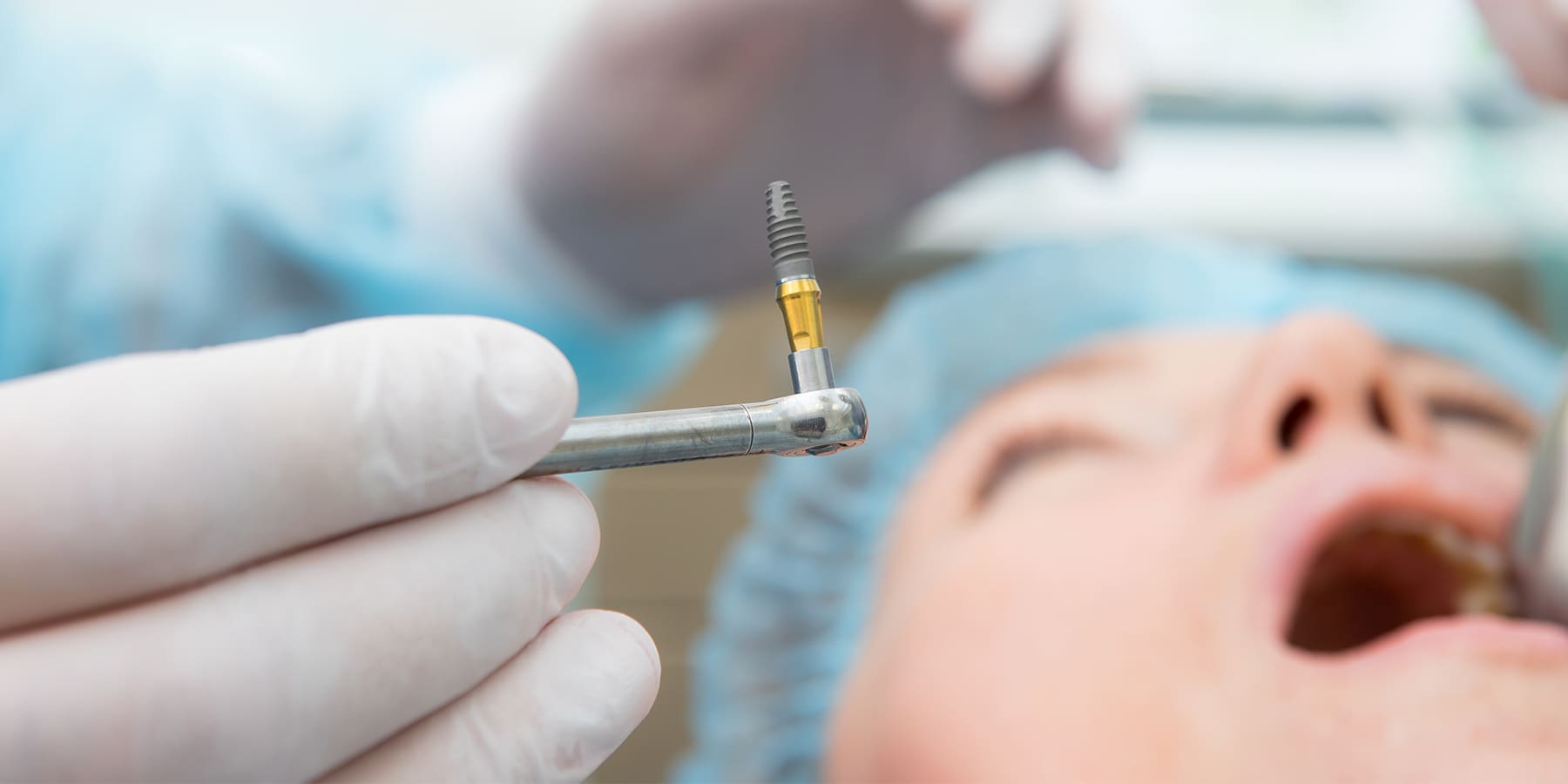Reviewed By Dr. Robert Barron, DMD
Reading Time: 3 minutes
A dental implant is a multi-step process that requires careful planning and healing.
The dental implant timeline can range from a few months to over a year, depending on factors such as bone health, gum disease, and additional procedures like bone grafting.
This blog will explain how long it takes to get a dental implant and what to expect at each stage.
Table of Contents
| How Long Does It Take to Get a Dental Implant? The answer depends on your oral health. Some patients can complete the implant process in as little as 4-6 months, while others require 12+ months if additional procedures like extractions and bone grafting are needed. |
The Basic Dental Implant Timeline
The process of getting a dental implant happens in several phases:
- Initial consultation
- Preparatory procedures (if needed):
- Gum disease treatment
- Tooth extraction
- Bone grafting
- Implant placement surgery
- Permanent crown placement
The table below provides a general estimate of the dental implant timeline based on different scenarios.
| Step | Estimated Time |
| Consultation & planning | 1 day |
| Gum disease treatment (if needed) | 1-3 months |
| Tooth extraction (if needed) | 1-3 months of healing |
| Bone grafting (if needed) | 4-6 months of healing |
| Implant placement surgery | 1 day |
| Osseointegration (implant fusing with bone) | 3-6 months |
| Permanent crown placement | 1-2 visits |
Factors That Impact The Implant Timeline
Here are the key factors that can extend the timeline:
1. Gum Disease Must Be Treated First
If you have gum disease, your oral surgeon will need to treat it before placing an implant. Active gum disease can cause implant failure due to infection and poor healing. Depending on the severity, treatment can take 1-3 months.
2. Tooth Extraction and Healing Time
If your implant is replacing a failing or damaged tooth, you may need a tooth extraction first. After extraction, the bone must heal before implant placement. Healing takes 1-3 months unless an immediate implant is placed.
3. Bone Grafting for Weak Jawbone
A strong jaw bone is essential for implant stability. If you have bone loss, a bone graft may be necessary before placing the implant. The healing period after a bone graft is 4-6 months before implant placement.
Learn more about bone grafting and dental implants here: Dental Implants and Bone Grafts – What You Need to Know.
4. Healing Abutment and Osseointegration
Once the implant is placed, a healing abutment is placed over the implant. This will be removed and replaced with a permanent abutment once healing is complete. Under the surface, a different type of healing takes place. The implant post needs 3-6 months to fully fuse with your jawbone. This process, called osseointegration, ensures a strong foundation for the crown.
5. Crown Placement
Once the implant has healed and integrated with the bone, the healing abutment is removed and replaced with a permanent abutment. A custom dental crown is attached to the abutment, completing the dental implant procedure.
Can the Process Be Sped Up?
For certain patients, techniques like immediate implant placement or All-on-4® implants allow for a faster timeline. However, these are only options if the bone and gum tissue are healthy enough to support immediate load-bearing implants.
Schedule Your Dental Implant Consultation Today!
The first step toward your new smile starts with a consultation.
Dr. Robert Barron, DMD is uniquely qualified to perform dental implant surgery. He has maintained a practice in Oral and Maxillofacial Surgery in Vaughan, Ontario since 2004.
To book a dental implant consultation at our oral surgery office in Vaughan, call (905) 669-2616 or complete the appointment request form. We are located at 3300 Highway 7 West, Suite 805.

